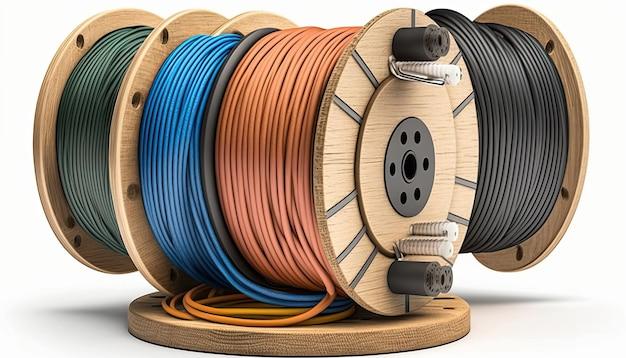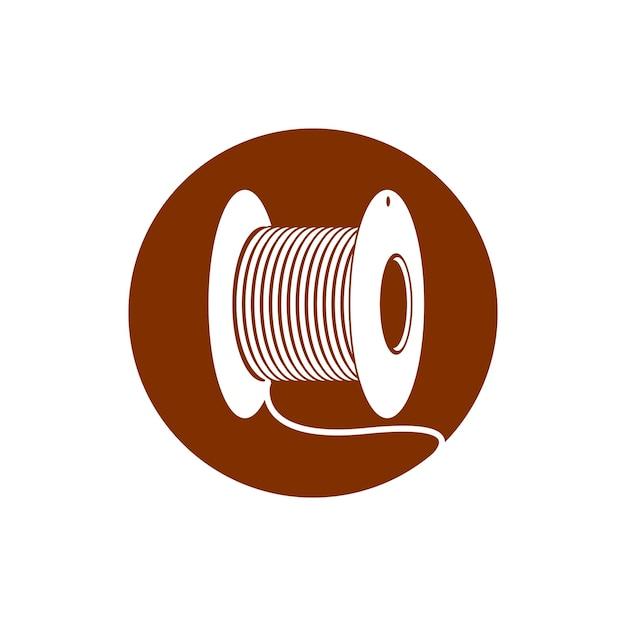In the fast-paced world of sales, reaching out to potential customers is crucial. This is where Sales Development Representatives (SDRs) come in. But what exactly is SDR outreach and how does it play a vital role in the sales process? In this blog post, we’ll explore the meaning of SDR outreach and why it matters. Whether you’re curious about the SDR role, interested in using HubSpot for SDRs, or want to learn how to become an SDR, this comprehensive guide has got you covered. Get ready to master the art of SDR outreach and elevate your sales game!
SDR Outreach: How to Master the Art of Cold Calling
Why Cold Calling is Essential for SDR Outreach
As a Sales Development Representative (SDR), reaching out to potential clients is a crucial part of your role. While it may not sound glamorous, cold calling is a tried-and-true strategy that can yield impressive results. By proactively reaching out to leads, you have the opportunity to make a personal connection, build relationships, and ultimately generate more sales.
Preparing for Success
Before you pick up the phone, it’s important to be prepared. Research your prospects, understand their pain points, and tailor your approach accordingly. Show them that you’ve done your homework and are genuinely interested in helping them solve their problems. This will not only make your calls more effective but also help you stand out from the competition.
Crafting your Opening Statement
The first few seconds of a cold call are crucial. You need to capture the prospect’s attention and pique their interest. Instead of diving right into a sales pitch, try starting with a compelling question or an intriguing statement that relates to their business. This will make them more inclined to listen and engage in a conversation with you.
Building Rapport and Showing Value
Once you’ve successfully grabbed their attention, focus on building rapport and demonstrating the value your product or service can provide. Listen actively to their needs, ask probing questions, and offer tailored solutions. By showing empathy and genuine interest in helping them, you’ll create a connection that can lead to fruitful conversations and potential sales.
Overcoming Objections
Objections are a common hurdle in the world of cold calling. Instead of viewing objections as roadblocks, see them as opportunities to address concerns and provide additional value. Prepare for common objections in advance and have well-thought-out responses ready. By confidently addressing objections, you can instill trust in your prospects and move the conversation forward.
Following Up
Persistence is key in SDR outreach. If a prospect doesn’t respond or shows initial disinterest, don’t be discouraged. Follow up with personalized emails, voicemails, or even social media messages. People are busy and may need multiple touchpoints before they are ready to engage. Keep following up until you receive a definitive response.
Conclusion
Mastering the art of cold calling is a skill that takes time and practice. By being well-prepared, crafting compelling opening statements, building rapport, overcoming objections, and following up consistently, you can improve your SDR outreach efforts and achieve greater success. Cold calling may not always be easy, but with the right mindset and approach, it can be a powerful tool in your sales arsenal. So pick up that phone and start dialing!
The Role of a Sales Development Representative (SDR)
So you’ve heard about Sales Development Representatives (SDRs) and you’re wondering what exactly they do in the sales process. Well, let’s dive into the fascinating world of SDRs and unveil the mysteries behind their role.
Understanding the SDR Landscape
First things first, let’s get a clear picture of what an SDR actually does. In simple terms, an SDR is a sales professional who specializes in prospecting and generating leads for the sales team. Picture them as the gatekeepers of the sales process, opening the door to potential customers and setting the stage for a successful sale.
Mastering the Art of Outreach
One of the primary responsibilities of an SDR is outreach. They reach out to prospective customers via phone, email, social media, or any other means necessary to make that initial connection. Their goal? To grab the attention of potential customers and spark their interest in the product or service being offered.
Crafting Engaging Messages
But wait, how do SDRs make their outreach efforts stand out from the crowd? Well, that’s where the art of crafting engaging messages comes into play. SDRs carefully construct compelling and personalized messages that resonate with their target audience. It’s all about capturing their attention and piquing their curiosity enough to elicit a response.
Researching Prospects
Before plunging headfirst into outreach, SDRs invest time in researching their prospects. They gather information about the company, industry, and individual to better understand their needs and tailor their approach accordingly. Armed with relevant knowledge, SDRs can demonstrate genuine interest and provide valuable insights to potential customers.
Qualifying Leads
Not all leads are created equal, and SDRs are well aware of that fact. They take on the responsibility of qualifying leads, separating the promising prospects from the rest. By asking the right questions and assessing the potential fit, SDRs ensure that sales reps are focusing their time and effort on pursuing the most qualified leads.
Collaborating with Sales Team
SDRs are not lone wolves in the sales process. They work closely with the sales team, passing along the qualified leads they have generated. Effective communication and collaboration between SDRs and sales reps are crucial to ensure a smooth handover and a seamless transition from outreach to the sales pitch.
Measuring Success
Lastly, SDRs actively track and measure their success through various metrics. From the number of calls made to the number of qualified leads passed on, these metrics help SDRs gauge their performance and refine their outreach strategies for better results. It’s all about continuous improvement and striving for excellence in the art of reaching out to potential customers.
And there you have it! A sneak peek into the multifaceted role of an SDR. They are the masters of outreach, armed with engaging messages and armed with the skills to qualify leads. With their collaboration and dedication, SDRs lay the foundation for a successful sales journey.
HubSpot for SDRs
If you’re an SDR (Sales Development Representative) looking to level up your outreach game, look no further than HubSpot. This powerful CRM platform is a game-changer for SDRs, offering a host of features to streamline your outreach efforts and supercharge your sales process.
Stay Organized with HubSpot’s Contact Management
Say goodbye to messy spreadsheets and hello to HubSpot’s contact management system. With HubSpot, you can easily keep track of all your leads and contacts in one centralized location. No more searching through multiple sources to find that one elusive prospect – everything you need is right at your fingertips.
Streamline Outreach with Email Sequences
One of the biggest challenges SDRs face is managing their outreach efforts at scale. That’s where HubSpot’s email sequences come in. These handy tools allow you to create a series of personalized emails that can be automatically sent to your prospects. With just a few clicks, you can set up a sequence and let HubSpot do the heavy lifting, freeing up your time to focus on building relationships.
Automate Follow-Ups with Task Automation
Following up is the name of the game when it comes to successful outreach. But manually keeping track of who to follow up with and when can be a challenge. HubSpot’s task automation takes care of that for you. Simply set up reminders and notifications, and HubSpot will make sure you never miss an opportunity to follow up again.
Analyze and Optimize with Advanced Reporting
To truly excel in outreach, you need to constantly analyze and optimize your efforts. HubSpot’s advanced reporting features provide you with invaluable insights into your outreach metrics. From open rates to response rates, you can easily track your progress and make data-driven decisions to improve your results.
Master Your Outreach with HubSpot
In conclusion, HubSpot is a game-changer for SDRs looking to up their outreach game. With its contact management system, email sequences, task automation, and advanced reporting, HubSpot provides everything you need to streamline your outreach efforts and maximize your success. So why wait? Give HubSpot a try and take your outreach to new heights!
Sales SDR Meaning
Understanding the Role of a Sales Development Representative
So you’ve heard the term “SDR” being thrown around in the sales world, but what does it actually mean? Let’s dive into the meaning of Sales Development Representative (SDR) and get a clear understanding of this crucial role in the sales process.
What Does SDR Stand For
SDR stands for Sales Development Representative. Think of an SDR as a front-line soldier in the sales army, paving the way for the rest of the team. They are the ones who engage with potential customers, nurturing relationships and identifying qualified leads.
The Middleman in the Sales Process
An SDR acts like a bridge, connecting marketing efforts with the sales team. They take the valuable leads generated by marketing and initiate conversations, ultimately passing them along to Account Executives (AEs) or other sales team members for further action.
Proactive Prospecting
One of the primary responsibilities of an SDR is to proactively prospect for potential customers. They search far and wide, utilizing various resources like social media platforms, industry events, and online communities, to identify individuals or companies that align with the ideal customer profile.
Qualifying and Nurturing Leads
Once potential leads are identified, it’s up to the SDR to qualify them by assessing their fit and interest in the product or service. They engage in meaningful conversations, asking questions, and understanding the pain points to determine if the lead meets the necessary criteria for a successful sales handoff.
The SDR’s Superpowers
SDRs possess excellent communication skills; they know how to charm potential buyers with their engaging personalities. They are curious and persistent, always striving to learn more about the prospects they interact with. SDRs are experts in building relationships, making connections, and providing value to the customers they engage with.
And there you have it! The meaning of the term “SDR” and a glimpse into the role of a Sales Development Representative. Next time you come across this acronym, you’ll know that SDRs are the driving force behind bridging marketing and sales, prospecting for potential customers, and nurturing relationships for the growth of the business.
Outreach SDR Salary
In the world of sales development representatives (SDRs), one question that often comes to mind is, “How much can I earn as an SDR?” Well, let’s dive into the realm of SDR salaries and discover what the outlook is like for those in the field.
The Starting Point: Oh, the Joy of Entry-Level Salaries!
When starting off as an SDR, it’s important to set realistic expectations. While entry-level salaries may not be as high as you hope for, they lay the foundation for future growth. You’ll find that the average entry-level SDR salary typically ranges from $40,000 to $50,000 annually. This is where your journey begins, my friend.
Mid-Level SDR Salaries: Hello, Promotions and Bonuses!
As you gain experience and refine your skills, promotions and bonuses become a regular occurrence. A mid-level SDR can expect to earn between $50,000 and $70,000 per year. Keep growing and excelling in your role, and you’ll soon find yourself climbing up the salary ladder!
Riding the Success Wave: Senior SDRs and Their Earnings
Now we’re talking! Senior SDRs, equipped with a wealth of experience, expertise, and a knack for closing deals, can enjoy salaries ranging from $70,000 to $90,000 annually. At this stage, you’ve established yourself as a valuable asset to the team and are reaping the rewards of your hard work.
Accelerating Towards New Horizons: Beware the Accelerators!
Hold on tight because things are about to get exciting! In addition to base salaries, many companies offer commission plans, commonly referred to as accelerators, to motivate SDRs further. These accelerators can significantly boost your income, allowing you to earn well over $100,000 annually. Ka-ching!
The Bigger Picture: The Intersection of Potential and Growth
Beyond just salaries, it’s important to consider the bigger picture. As an SDR, you’re not just building your bank account, but you’re also developing valuable skills, gaining industry knowledge, and creating a solid foundation for a successful career in sales. The potential for growth and advancement is limitless, and the journey is brimming with opportunities.
Final Thoughts: Set Your Sights on Success!
All in all, while your initial SDR salary may not be incredible, it sets the stage for great things to come. As you progress and prove your worth, your earning potential as an SDR increases exponentially. So, don’t fret about the starting point; instead, focus on honing your skills, exceeding targets, and taking advantage of every opportunity that comes your way. With determination and a touch of charm, you’ll be coasting towards success as an SDR before you know it!
Now go out there, ace those sales calls, and let your salary soar to unimaginable heights!
What does an SDR do
Sales Development Representatives (SDRs) are the unsung heroes of the sales team, navigating the often treacherous seas of lead generation and prospecting. Let’s dive into the exciting and sometimes challenging world of SDRs.
The First Point of Contact
SDRs are the friendly faces (or voices) that potential customers encounter when they express interest in a product or service. They act as the bridge between marketing and sales, reaching out to leads to assess their needs and qualify them for further engagement. Think of them as the ultimate matchmakers, connecting the right customers with the right salespeople.
Cold Calling (and more!)
One of the key responsibilities of an SDR is making cold calls. No, they’re not masochists; they have a unique ability to turn potentially awkward conversations into engaging dialogues. Armed with charm and persuasive skills, SDRs aim to build rapport, identify pain points, and entice prospects with the benefits of the product or service.
Email Outreach
In addition to phone calls, SDRs are experts in crafting compelling emails. They use their writing prowess to capture a prospect’s attention and stand out among the sea of emails flooding their inbox. With a touch of creativity and personalization, SDRs entice potential customers to take action, whether it’s scheduling a meeting or exploring more information.
Research and Strategy
SDRs are not just smooth talkers, but also master researchers. They dive deep into their prospect’s industry, company, and pain points, armed with the latest tools and techniques. This knowledge helps them tailor their messaging and approach to each individual prospect, increasing the likelihood of success.
Collaborating with Sales
SDRs don’t work in isolation; they are an integral part of the sales team. They collaborate closely with account executives and sales managers to develop and refine the most effective outreach strategies. Regular communication and feedback loops ensure that SDRs are continuously improving their processes and achieving their goals.
Nurturing Relationships
The role of an SDR extends beyond the initial outreach. They nurture relationships with leads, ensuring a seamless transition to the next stage of the sales process. By maintaining open lines of communication and providing ongoing support, they help build trust and maximize the chances of closing a deal.
In conclusion, SDRs are the superheroes of the sales world, juggling multiple tasks with finesse and charm. From cold calls to email outreach, research to collaboration, they are the driving force behind successful sales pipelines. So, next time you encounter an SDR, remember the crucial role they play in connecting you with the perfect solution to your needs.
How to Become an SDR
Setting Your Sights on Success
So, you want to dive into the world of Sales Development Representatives (SDRs)? Buckle up, my friend, because this subsector of sales is both exciting and challenging. But fear not! With the right mindset and a sprinkle of determination, you can become a successful SDR.
Embrace the Learning Curve
Becoming an SDR is like learning to ride a bicycle: it takes practice, perseverance, and a few scraped knees along the way. Don’t be discouraged if you stumble in the beginning. Embrace the learning curve and use each setback as a stepping stone toward improvement.
Enhance Your Communication Skills
As an SDR, your communication skills will be the secret sauce that sets you apart from the rest. Master the art of active listening and learn to ask the right questions to uncover your prospects’ pain points. Effective communication will be your greatest ally in this journey.
Research, Research, Research
If you want to close deals like a pro, you need to know your market inside out. Take the time to research your target audience, familiarize yourself with industry trends, and stay updated on your company’s products or services. Knowledge is power, my friend.
Embody the Tenacious Go-Getter
Tenacity is the name of the game in the world of SDR outreach. Show your potential employers that you’ve got what it takes by demonstrating your hunger for success. Be proactive, take initiative, and showcase your ability to bounce back from rejection. You’ve got this!
Tips for Becoming an SDR:
1. Hone Your Persuasion Skills
Embrace the art of persuasion by understanding the needs and pain points of your prospects. Craft compelling arguments to demonstrate how your product or service can solve their problems. Show them the value they’d be missing out on by not hopping on board.
2. Leverage Technology
In the digital age, technology can be a game-changer for SDRs. Utilize cutting-edge tools like CRM software, sales automation platforms, and data analytics to streamline your workflow and maximize your productivity. Let technology become your trusty sidekick.
3. Network Like a Pro
Networking is the holy grail of sales success. Attend industry events, join online communities, and build meaningful relationships with fellow professionals. Remember, a solid network can open doors to new opportunities and valuable insights.
4. Keep Evolving
To stay ahead of the curve as an SDR, continuous learning is key. Stay hungry for knowledge, attend webinars, read books, and learn from seasoned professionals. The sales landscape is ever-evolving, so embrace a growth mindset and adapt with the changes.
So, my aspiring SDR, armed with these insights, you’re well on your way to embarking on a thrilling journey within the world of sales development. Remember, success doesn’t happen overnight, but with the right attitude and a sprinkle of persistence, you’ll be climbing the sales ladder and reaching new heights in no time. Best of luck!
What is SDR Outreach
Imagine you’re a salesperson, armed with your charm and charisma, ready to conquer the world of sales. You have a list of potential customers, but how do you get them interested in your product or service? This is where SDR outreach steps in to save the day.
The SDR in the Spotlight
Let’s start with the basics. SDR stands for Sales Development Representative. These fine folks are the unsung heroes of the sales world. They are the ones responsible for prospecting and reaching out to potential customers, acting as the bridge between marketing and sales.
Casting the Outreach Net
Outreach is the magical process of reaching out to potential customers and getting them interested in what you have to offer. It’s not just about bombarding them with sales pitches; it’s an art that requires finesse, strategy, and a touch of creativity.
The Tools of the Trade
To excel in SDR outreach, you’ll need the right tools. One essential tool is a customer relationship management (CRM) system, which helps you track your interactions with prospects and keep all your valuable information in one centralized place. Other tools include email automation platforms, social media management tools, and good old-fashioned charm.
Crafting the Perfect Outreach
Creating compelling outreach messages is crucial. You want to grab your prospect’s attention and make them think, “Wow, this person understands my pain points.” Personalization is key. Tailor your message to each prospect, highlighting how your product or service can solve their specific problems. A sprinkle of humor or an interesting anecdote never hurts either.
The Follow-up Dance
After sending that first outreach message, it’s all about the follow-up. Persistence pays off, but don’t cross the line into pestering territory. Be helpful, provide value, and keep the conversation going. A well-timed follow-up can often make the difference between a closed deal and a missed opportunity.
Metrics and Optimization
Like any good sales strategy, SDR outreach is all about tracking and analyzing performance. Pay attention to metrics like response rates, conversion rates, and customer acquisition costs. Use this data to constantly optimize your outreach approach and identify what’s working and what’s not.
In conclusion, SDR outreach is the secret weapon of salespeople worldwide. With the right tools, a pinch of creativity, and a dash of persistence, you can master the art of reaching out to potential customers and turning them into loyal clients. So go forth, brave SDR, and conquer the world of sales with your charming outreach techniques!
Who Should I Reach Out to as an SDR
Being a Sales Development Representative (SDR) means you’ll be reaching out to a wide range of people. But who exactly should you target? Let’s break it down:
Ideal Customer Profile
First and foremost, you should focus on reaching out to prospects who fit your Ideal Customer Profile (ICP). These are the individuals or companies who have a higher likelihood of benefiting from your product or service. By targeting the right audience, you increase your chances of success and avoid wasting time on leads that are unlikely to convert.
Decision Makers
When reaching out as an SDR, it’s essential to target decision makers. These are the individuals who have the authority to make purchasing decisions or influence them heavily. By connecting with decision makers, you are more likely to have productive conversations that can lead to sales. Look for job titles such as managers, directors, or executives in relevant departments.
Industry Experts and Influencers
Reaching out to industry experts and influencers can bring valuable insights and connections. Engaging with thought leaders in your industry can help you establish credibility and build relationships within your target market. Consider reaching out to these individuals for collaboration opportunities, guest blog posts, or simply to start a conversation and learn from their expertise.
Referrals and Existing Customers
Don’t underestimate the power of referrals and your existing customer base. Happy customers can be great advocates for your product or service, and their recommendations carry weight. Reach out to them for testimonials, case studies, or simply to ask if they know anyone else who could benefit from what you offer. Word-of-mouth referrals can often lead to high-quality leads.
Competitors’ Customers
While it may seem counterintuitive, reaching out to your competitors’ customers can be a fruitful strategy. If a customer is already using a similar product or service, they are likely already aware of the pain points your offering aims to solve. Be respectful in your approach and highlight how your solution offers a unique value proposition compared to what they currently have.
Networking Events and Conferences
Attending industry-specific conferences and networking events is an excellent way to meet potential leads face-to-face. Take the opportunity to introduce yourself, exchange business cards, and make personal connections. These events often attract decision makers, industry experts, and like-minded professionals, providing valuable networking opportunities.
As an SDR, your outreach efforts should be strategic and focused. By targeting your Ideal Customer Profile, decision makers, industry experts, existing customers, competitors’ customers, and leveraging networking events, you can increase your chances of success. Remember to tailor your approach to each segment and always provide value in your communication. Happy prospecting!



